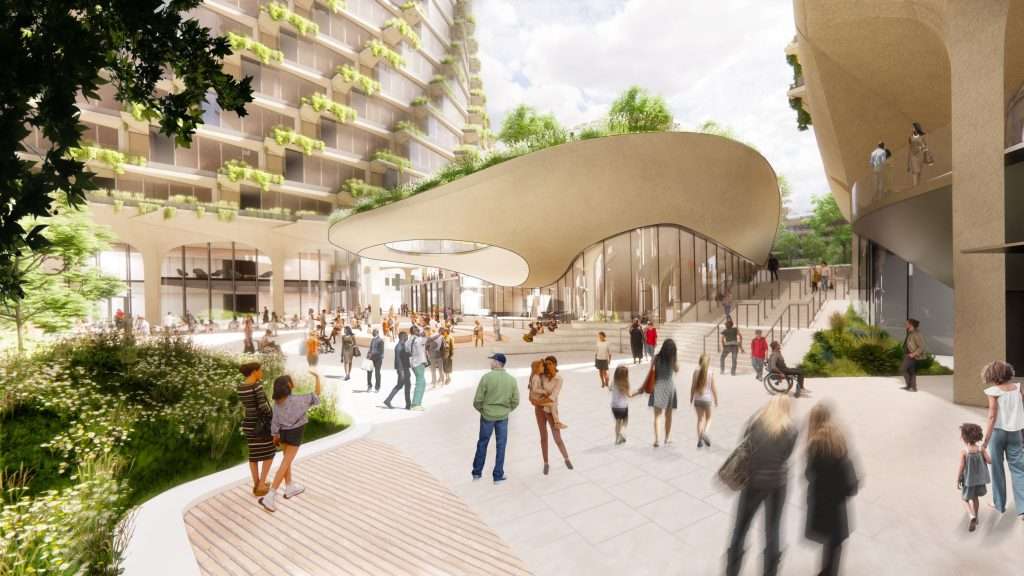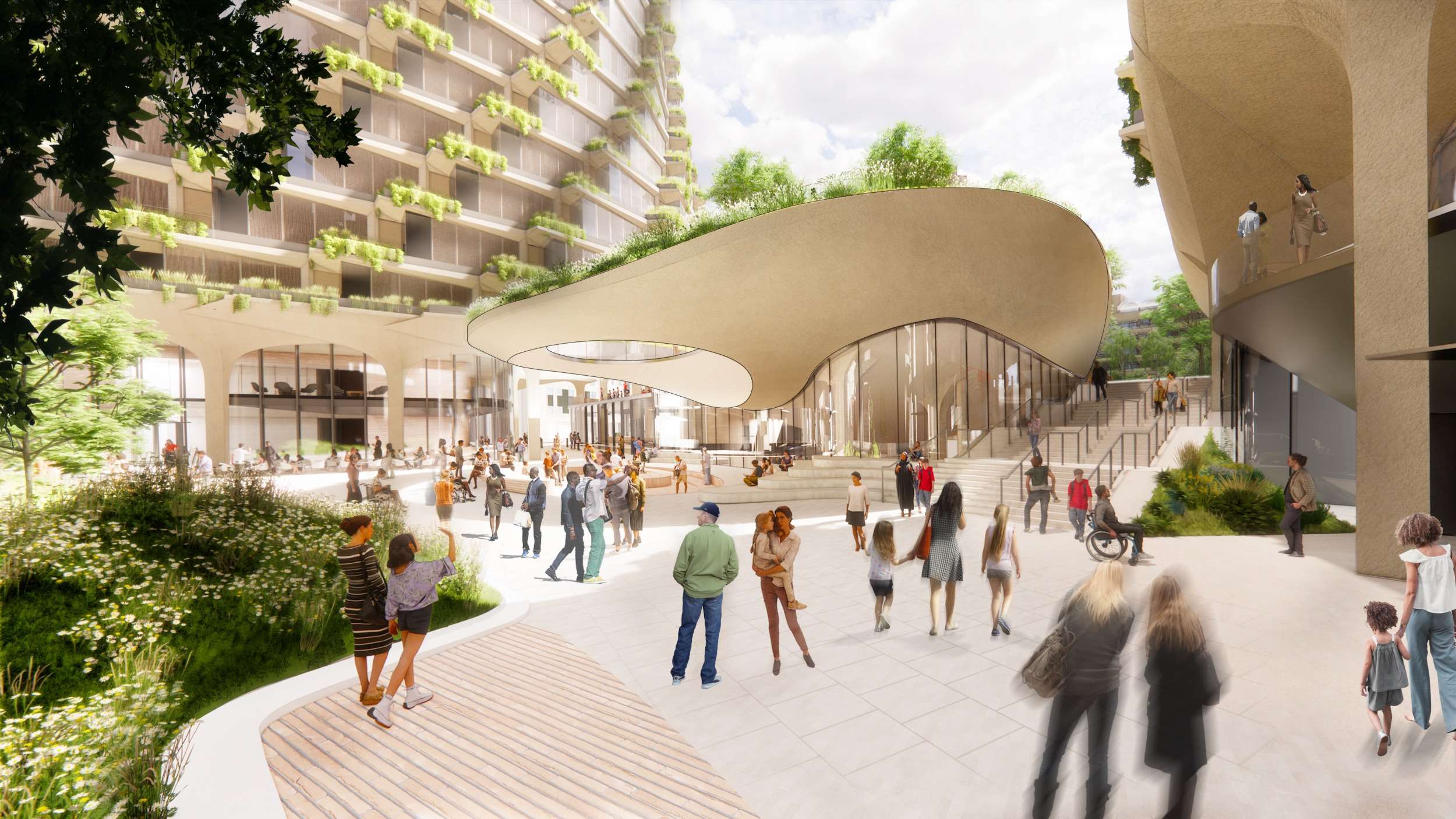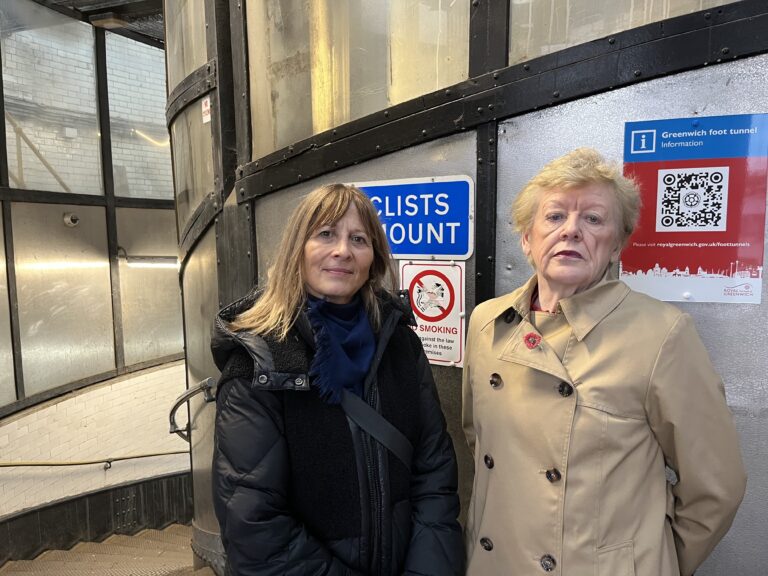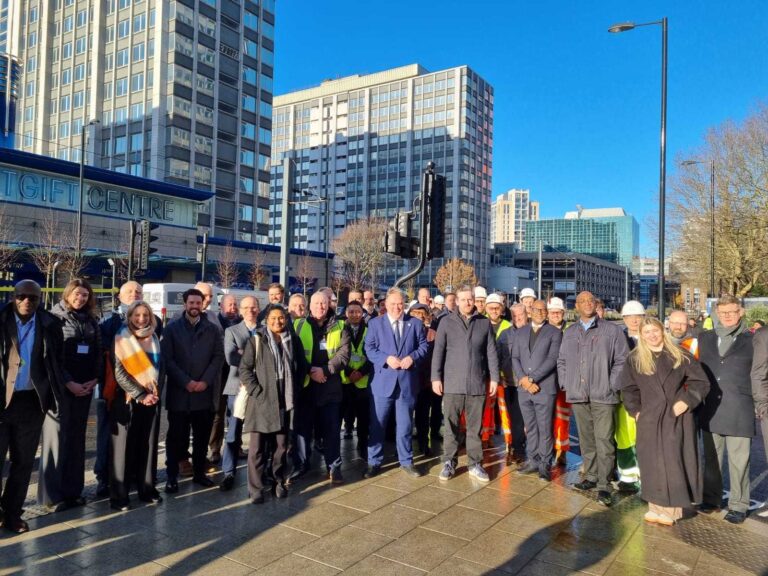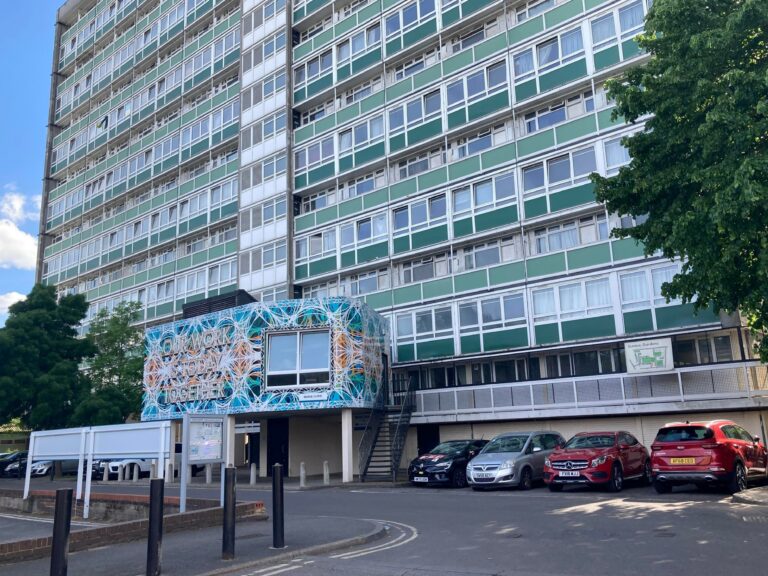A major City of London application to redevelop a site by the Grade-II listed Barbican estate has been described as ‘shameful’ and ‘ill-considered’ as hundreds of objections are filed against the scheme.
The proposed London Wall West project, which would involve knocking down the Museum of London building and Bastion House and replacing them with three new office blocks, has drawn responses from scores of concerned parties due to its potential environmental and heritage impacts.
A City of London spokesperson said the Corporation will not comment on a live planning application, though adding that all feedback will be considered and set out in a report ahead of a vote on the proposals.
Documents filed with the City, which is both applicant and planning authority, say the site is being considered for redevelopment for reasons including the buildings being unsustainable, unwelcoming, and unused. The Museum of London will be empty once it completes its move to Smithfield in 2026, while the report notes the 27-storey Bastion House is also vacant, its lease having expired last year.
The three proposed blocks range from five to 17-storeys tall, and will help meet the Corporation’s projected need for 1.2 million square metres additional floorspace by 2040. A number of public realm improvements, such as making the space more accessible and better connected to the Barbican estate, are also planned.
A member of the Barbican Quarter Action group (BQA), which was formed to fight for ‘environmentally, ethically and socially responsible’ planning in the city, previously told the Local Democracy Reporting Service (LDRS) they are not against development, but are concerned about the impacts of demolishing the buildings.
“We really believe the City can do better on behalf of the half a million workers who come in each day, the businesses, all the visitors, as well as people who live here, and it can do better and it needs to do better to think about not just current but future generations,” they said.
The Corporation says over the long term the scheme would generate less carbon than retrofitting the current buildings, though this is contested by the campaign group. Architect and net zero consultant Simon Sturgis, who was hired by BQA to review the City’s claims as part of its objection, has backed these concerns. In a report compiled for the BQA, Targeting Zero, Mr Sturgis’ consultancy, wrote: “The submitted proposal is not optimising the carbon emissions impacts of developing this site, and as a result is in direct opposition to UK National, GLA (Greater London Authority) policies, as well as the CoLC’s own policies.”
‘A callous mistake’
Across the three applications filed for the proposed London Wall West scheme, which as well as the building of the new office towers also includes external alterations to highways at the Barbican estate and the demolition of Ferroners’ House plus alterations to Irongmongers’ Hall, more than 900 objections had been filed at the time of writing, with 11 in support.
The original deadline for submitting comments was earlier this month. However, due to technical issues with the planning portal, and the City receiving further information on the scheme’s Environmental Statement, this has been pushed back to an undecided date.
Many of those opposing made reference to the ‘iconic’ architecture of the former Museum of London and Bastion House, both of which are seen as important monuments to the City’s post-war planning history, with the potential carbon emissions also noted.
One objector wrote: “It seems insane to me, to be demolishing another part of this international landmark. It was a huge red flag when the Museum closed and rumours started about the fate of the building. And now those rumours have proved true.
“As an ex-resident of the area and frequent visitor, I am sickened at the idea of yet more of London’s cultural heritage being torn down in favour of even more soulless office buildings. I’m sure it’s part of a long term plan to eradicate the Barbican estate completely and this latest proposal just furthers that shameful vision.”
Another wrote the City of London even considering the project constitutes ‘a callous mistake’. “The Barbican is a world renowned location for its architecture, culture and heritage. Do not allow for developers to take that away from London with yet another poorly designed and ill-considered sky scrapers that adds absolutely no culture to our city. Reimagine the space and reuse. The BT Tower is being reimagined, these things are not impossible.”
As part of the BQA’s objection, the group hired experts including not only Mr Sturgis but also town planning consultancy CarneySweeney to review the submission. In its report, CarneySweeney wrote it believes the proposals should be referred to the GLA for approval, due to it qualifying as an application of ‘potential strategic importance’. “To not do so will mean that the application has not been subject to the correct legal procedures,” the consultancy added.
A BQA member told the LDRS the group continues to call for “a creative reimaging of these structures, instead of their replacement by overbearing office blocks, which will add little to the vibrancy or cultural offer of this internationally celebrated area”.
They said: “The proposed demolition and replacement of these two buildings has already drawn more than 700 objections, including from residents, workers and businesses, politicians, prominent voices in the architectural profession, and The Twentieth Century Society.
“Flying in the face of these objections the City has spent over £11m pushing through this unnecessary planning application to demolish the buildings. The size and scale of the opposition now expressed on the City’s planning portal is enormous and will continue to grow. We hope the City is listening. Our councillors can and should do better and we are calling on them to show leadership and vision in the face of climate change and as custodians of our shared heritage.”
A City of London spokesperson previously told the LDRS: “Our aim is to create a vibrant and sustainable future for the site, contributing to the City Corporation’s Net Zero strategy. The ‘best consideration’ requirement is aligned with our commitment to environmental sustainability for the benefit of the community and the site.”
Photos: The City of London is looking to knock down the Museum of London building and Bastion House, and to build three office blocks in their place.
As well as the three office blocks, a range of public realm improvements are also included in the London Wall West plans.
The former home of the Museum of London, with Bastion House behind it. Credit: Jan Marc Petroschka.

